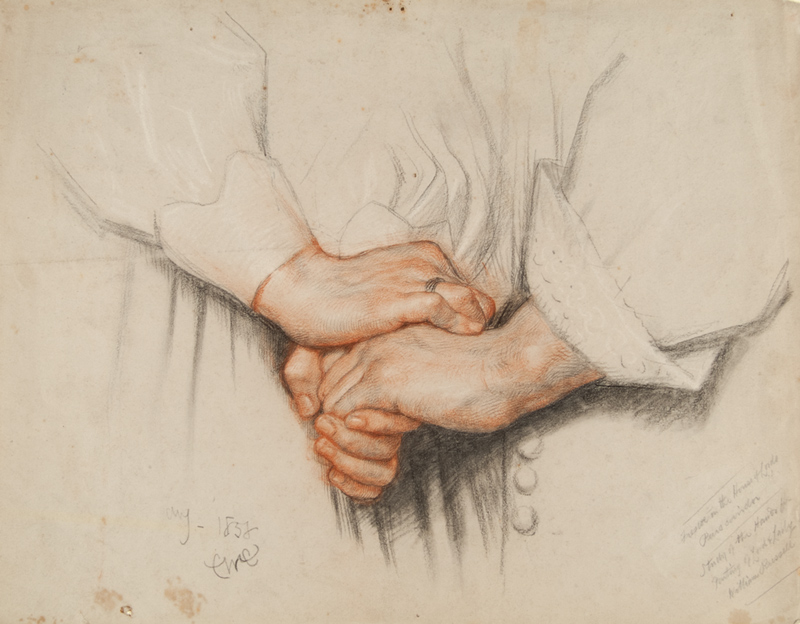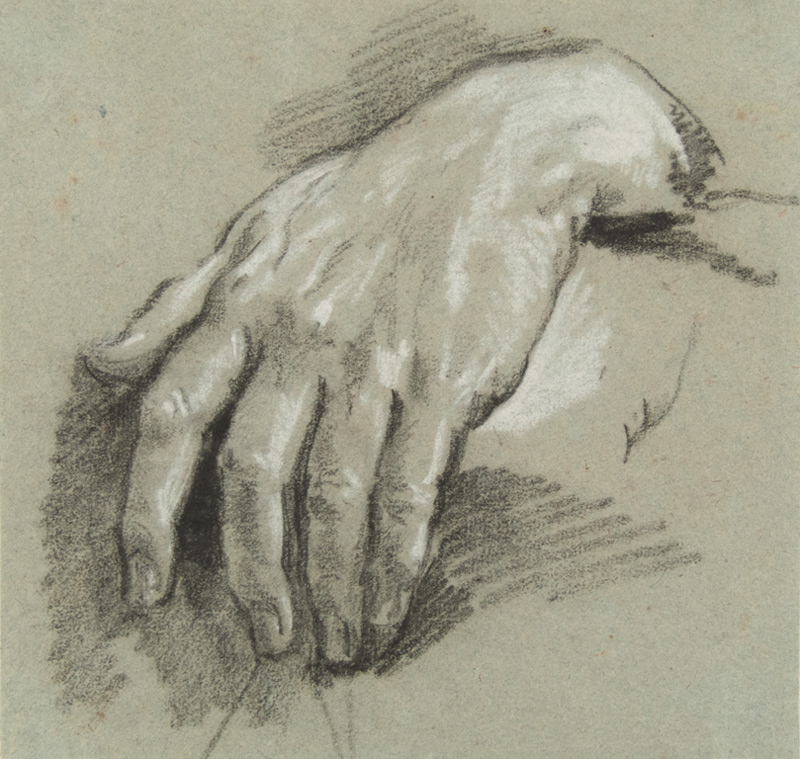The blog of The Huntington Library, Art Museum, and Botanical Gardens.
EXHIBITIONS | You’ve Got to Hand It to Them
Posted on Wed., May 29, 2013 by

Charles West Cope, Clasped Hands (Study for Fresco in Peers' Corridor, Palace of Westminster), ca. 1858. Huntington Library, Art Collections, and Botanical Gardens.
Hands reveal what we think, but might not say. They express what words cannot, exposing so much about a person.
A subject matter of great familiarity, the drawings on view in “A Show of Hands: Drawings from the Huntington’s Art Collections, 1600—1900” provide a glimpse into how artists sought to capture these vehicles of emotive potential.
Take, for example, their capability of infinite expression: hands calm, caress, intimidate, stop, clutch, feed, break, and prop, among other actions. They are used to create, act, show, perceive, and communicate. Hands are extraordinarily expressive—and that’s precisely why artists have rendered them for centuries. Arguably the most difficult and challenging element of a figural subject for an artist to portray successfully—due to the complexity of planes, masses, and joints—hands have the potential to express the soul.

Giovanni Battista Cipriani, Study of a Hand, mid to late 18th century. Huntington Library, Art Collections, and Botanical Gardens.
Though the hands in this exhibition are separated from their bodies, the drawings depict individuals who are very much alive on the pages. Giovanni Battista Cipriani’s Study of a Hand, dismembered directly above the wrist, showcases a vigorous handling of a black chalk background, the darkest shadows of which simultaneously outline the hand and fingers. He knew the subject “like the back of his hand.” The loose, quick, persistent marks display great energy and vitality. While Cipriani uses the color of the paper for the flesh tones, shadowy valleys and highlighted peaks describe the topography of this veined and somewhat aged hand.
Drawings are unique, in a sense, because they are a direct and uninhibited translation of the inner workings of an artist’s mind. Moreover, the works in this exhibition are all drawn with great care from real life. Like portraits, the characters of each person are seen through the distinctive physiognomies of their hands.
The nature of the subject being somewhat self-reflective is quite beautiful too—the works themselves remain as traces of the gestures and handwork of their makers. When we think of their producers—artists who fabricate and communicate with their own hands—we become conscious of the exceptional sensitivity they bring to rendering such forms and a deep comprehension of their power.
“A Show of Hands: Drawings from the Huntington’s Art Collections, 1600—1900” is on view through June 17 in the Works on paper Room of the Huntington Art Gallery.
Lilit Sadoyan is the guest curator of "A Show of Hands" and is museum educator at the Getty Museum.